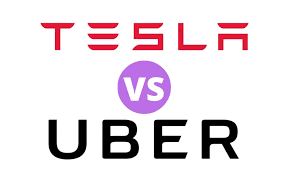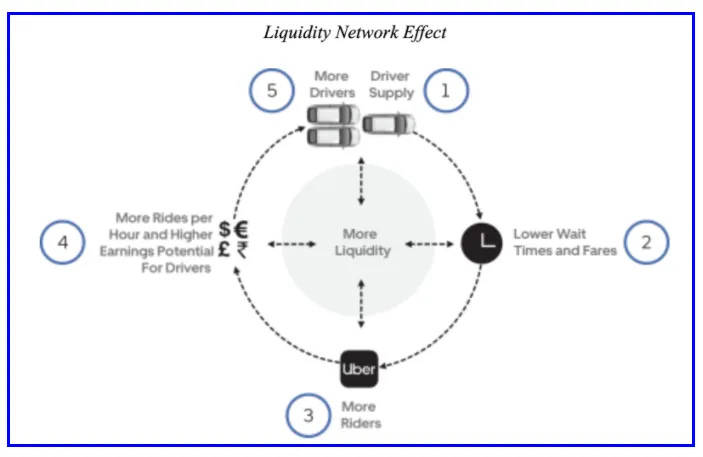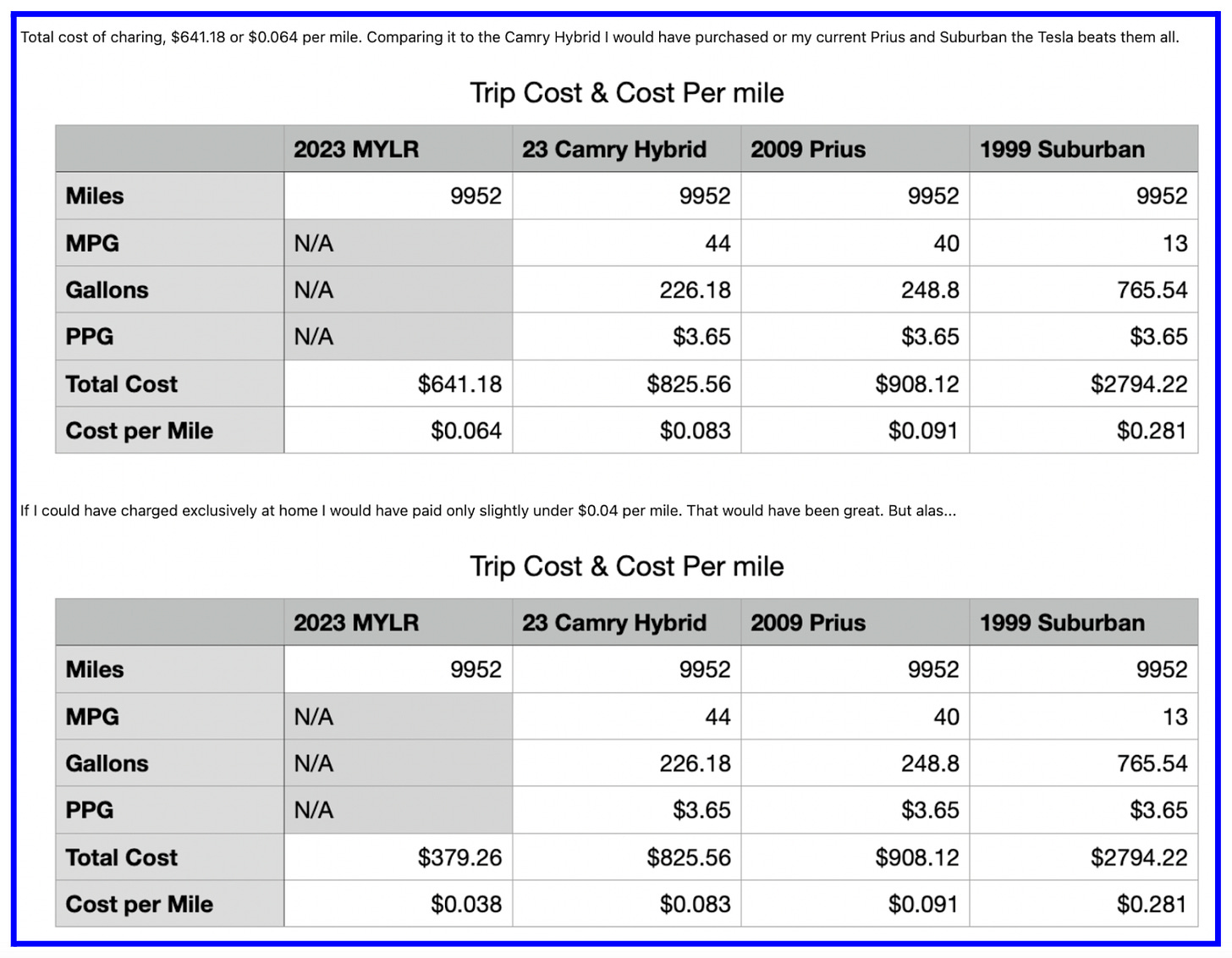- Playing For Doubles
- Posts
- Will Tesla Kill Uber?
Will Tesla Kill Uber?
Let's Find Out
If you like this article, please do share it with a friend. Thanks :)

Will Tesla Kill Uber?
It can be fun to opine on topics like this…so here are some off the cuff thoughts I put together yesterday (Questions For You: what am I missing? What do I have wrong?).
First, Uber clearly has a strong moat. It's extremely difficult to get 100s of millions of people (globally) to think about you every time they need to get around. For Uber to die, this would need to change. Habits however are notoriously hard to change. But when incentives are there, habits do ultimately change.
With Uber, you get convenience, reliability and consistency (my experience was the same whether I was using Uber in the US, Canada, or Romania). If Tesla launches Robotaxis, the question then really becomes: will this make Uber less convenient, reliable and affordable?
To answer this , we must first consider Uber's strengths.
Let’s revisit these from our earlier notes on Uber.
Here are three strengths we had listed:
Uber’s Experience is Radically Better Than Alternatives:
Shorter pick-up times and better coverage density than taxis, and frictionless payments.
Customer/Driver Dual-rating System that leads to a much more civil rider/driver experience.
Trust and Safety created by a more accountable system.
Waymo is already doing (a) in San Francisco so there is already a precedent. If you believe in the technical talent at Tesla, it should be able to do the same.
Dual Ratings can be implemented pretty easily.
Lastly, I believe Tesla has the potential to create superior Trust and Safety. Why? Because humans can be unpredictable. I was once in an Uber where the driver started yelling at us. Another time, the driver got upset, and started driving recklessly. These situations would not happen in an autonomous car. I imagine, one could even private live-stream a car ride (eg: let’s say you called a car for your kids or elderly parents) because Teslas already have cameras inside.
To surpass Uber’s experience (i.e. convenience and reliability), Tesla would:
Require its fleet and fleet density to be better than Uber’s, AND
Require that autonomous driving is safer than human-powered driving (of course, this is a fundamental requirement without which this whole discussion is moot).
Uber Enabled/Enables a Whole New Set of Use Cases:
Increased use in less urban areas.
Rental car alternative
A convenient way for a couple’s night out
A way to transport kids or older parents.
Supplemented mass transit.
Legitimate alternative to Car Ownership?
Use-cases ‘a’ through ‘e’ could all be supported by Tesla. Again, requiring a better and more dense fleet than Uber’s.
In fact, one can imagine Tesla offering even more use cases than Uber does. For example, here are the first three that came to mind:
A 24/7 fleet, which should lead to higher utilization
Higher Availability for Longer Distance Trips
A source of passive-income for car owners (much easier to manage than Turo)
(f) - Cars are one of the most expensive assets we purchase. And they mostly just sit parked, both during the day and the night. With autonomous driving, cars could become a source of income, thereby making car ownership profitable.
Network Effects:
Pickup Times + Coverage Density + Utilization ⇒ all of which increase network liquidity.

This is the most interesting and likely the hardest challenge to overcome.
Two sided marketplaces are notoriously hard to create. Not only is it hard to ensure equilibrium between supply and demand, it is expensive. Think about how much Uber had to spend to get to where it is today. Remember all those free or discounted rides?
If Tesla launches a more affordable model in the first half of 2025, that would help increase their fleet size. Once the fleet is growing Tesla could create offers to incentivize car owners to let their cars be used as robotaxis. But building out a transportation network will likely be a slow process. I imagine this is why Tesla is also exploring licensing its FSD technology to other automakers.
Of course this only solves the supply problem. People would also need to start hailing Teslas instead of Uber.
Network Utilization: Utilization is a key attribute for increasing network utility. Uber continues to increase its network utility by not only transporting humans, but increasingly also providing access to local goods and services via Uber Eats/Delivery.
Tesla would need to find a way to combat this. I think there are multiple different things Tesla could try here.
Homework Questions:
How could Tesla Combat this?
How would Uber fight back?
The above discussion is all about how Tesla could match and surpass Uber’s convenience and reliability.
But what about affordability?
Thanks for reading Playing For Doubles! Subscribe for free to receive new posts and support my work.
Subscribe
Cost Per Mile
It is unlikely that robotaxis take off unless Tesla’s cost per mile is less than Uber’s.
There are two components to the costs:
Operating Costs
Ownership Costs
Operating Costs:
The US Department of Transportation estimated the following as the average cost of owning and operating an automobile in 2022:

Question: If you own a Tesla, have you calculated how much it costs you to operate it? (If so, please share)
According to one guy on the Tesla Motors Forum, his Tesla cost him $0.04-$0.065 per mile (Of course, there are multiple Tesla models out there, not just the one he has, but lets go with it…). And this was just for the first 10k miles driven, so let’s add a little bit for maintenance costs (over time). Let’s say it costs 5-7.5 cents per mile. With autonomous cars, I imagine insurance costs would be lower too, but lets ignore that for now.

FSD isn’t free. At ~$99/mo, that adds (8c/mile if 15000 annual miles driven). But with robotaxis, miles driven would almost certainly go up. Let’s say it goes up 30%, then cost per mile = 6c
That gives us the following cost of operation ⇒ ~11c to 13.5c/mile (compared to 12c/mile for the avg car).
Ownership Costs:
Ok, let's turn our attention over to Ownership Costs.
According to the Department of Transportation, the average ownership cost is 38c/mile.
Tesla is reportedly working on selling sub-$30,000 cars starting in 2025. If that happens, it would reduce the total cost of ownership substantially.
At $30K, assuming you drive 15K miles per year (plus 30%), to match the average ownership cost of 38c/mile, these Teslas would need to have a useful life of just 4 years. Teslas typically last much longer than this. I’ve heard of plenty of Tesla owners whose cars have lasted 10+ years. Let's assume 8 years.
Ownership Cost = $30K / (15K x 1.3 x 8) = 19c/mile
Total Costs:
Tallying up the costs, Average Total cost = ownership cost + operating cost
For Non-Tesla: 38c + 12c = 50c/mile
For Tesla: 19c + (11c to 13.5c) = 30 to 32.5c/mile
That’s an impressive 35-40% cost savings!
That certainly could be a great adoption incentive if robotaxis could pass along these savings to riders.
With that said, let’s go back to our original question, if Tesla launches Robotaxis, will this make Uber less convenient, less reliable and less affordable?
Based only on a couple of hours of analysis, it seems entirely possible that Tesla can produce a more convenient, reliable and affordable alternative compared to Uber. However it will be expensive and the rollout would likely be slow.
Caveat Emptor!
Of course…lots of assumptions have gone into the math above…
We would need to validate these assumptions before feeling comfortable with the above results.
And we haven’t explored Uber’s potential competitive responses in a robotaxi world
What am I missing?
What do I have wrong?
Thanks for reading Playing For Doubles!
If you like this article, please do me a favor and share it with one friend.
Thanks for reading!